SWOT Analysis: The Ultimate Tool for Business Growth - Mageplaza
Learn how to use SWOT analysis to identify strengths, weaknesses, opportunities, and threats. Build smarter strategies and drive business growth effectively.
Summer Nguyen | 06-24-2024

How can you save time on your Shopify store and alleviate these burdensome duties? Shopify Flow is for you.
As a store owner, you juggle numerous responsibilities, ranging from major decisions to minor tasks like identifying valuable customers or updating staff. However, not every task demands your direct attention; automation can handle these processes more efficiently than manual labor.
Enter Shopify Flow – your virtual assistant for automating mundane tasks. By delegating these chores to the software, you gain precious time to focus on business growth, without sacrificing efficiency.

Shopify Flow is an e-commerce automation platform. Shopify developed it to help merchants streamline their business. It does this by automating repetitive tasks and workflows. It allows merchants to make custom automation rules. They do not need coding knowledge. This lets them save time and focus on growing their business.
You create workflows by dragging and dropping. You can use them for activities and processes in your Shopify store. Shopify Flow may talk to installed apps. It triggers actions and sends data as part of the process.
Workflows can also be created directly from your Shopify Admin. This means you can run automation on individual or multiple orders, draft orders, customers, or goods. Furthermore, this capability allows users to run workflows from the past.
Shopify Flow
How much does Shopify Flow cost? You will be pleased to learn that this app is entirely free! Shopify Flow, which was previously exclusively available to Shopify Plus merchants, is now available to all stores on the Shopify, Advanced, and Shopify Plus plans.
Most Shopify Flow features are available on all plans. Differences between plans include:
To develop the automation, you design a process with components like triggers, conditions, and actions.
| Workflow components | Definition | Example |
| Triggers | A trigger is an event that initiates a workflow, which might occur in your store or within an app. | When an order is placed |
| Conditions | A condition decides whether an action is performed based on the circumstances you specify. | If the order value is greater than $100 |
| Actions | An action is a modification performed to your store or app when a condition is met. | Send a thank-you email to the customer |
The Shopify Flow connector is a technology that can be added to your Shopify store’s website. It enables automated workflows and processes for many actions in an eCommerce store. Connectors allow you to connect many apps to Shopify Flow to extract triggers and take action if certain circumstances are satisfied. This connector allows retailers like you to develop custom processes and automate repetitive tasks like order processing, inventory management, and more.

Here are some examples of Shopify Flow connectors:
So, Shopify Flow and Connectors will help you make your store run better. They will also free up time for other activities.
Shopify Flow allows you to construct a workflow on a free-form canvas. Below, we will demonstrate how to design a simple process with a single trigger, condition, and action. Furthermore, you can create more sophisticated workflows by adding more conditions and actions, or by utilizing advanced triggers and actions.
Steps to Follow:
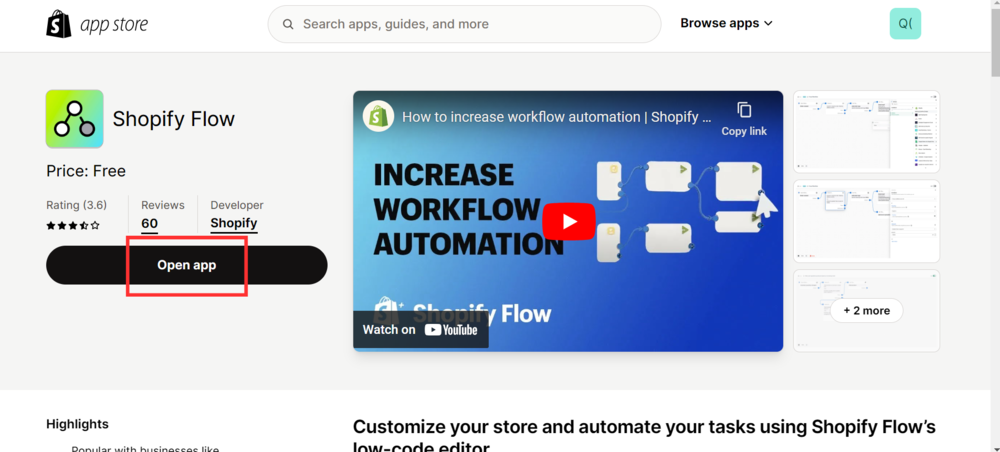
4. Select Create workflow.
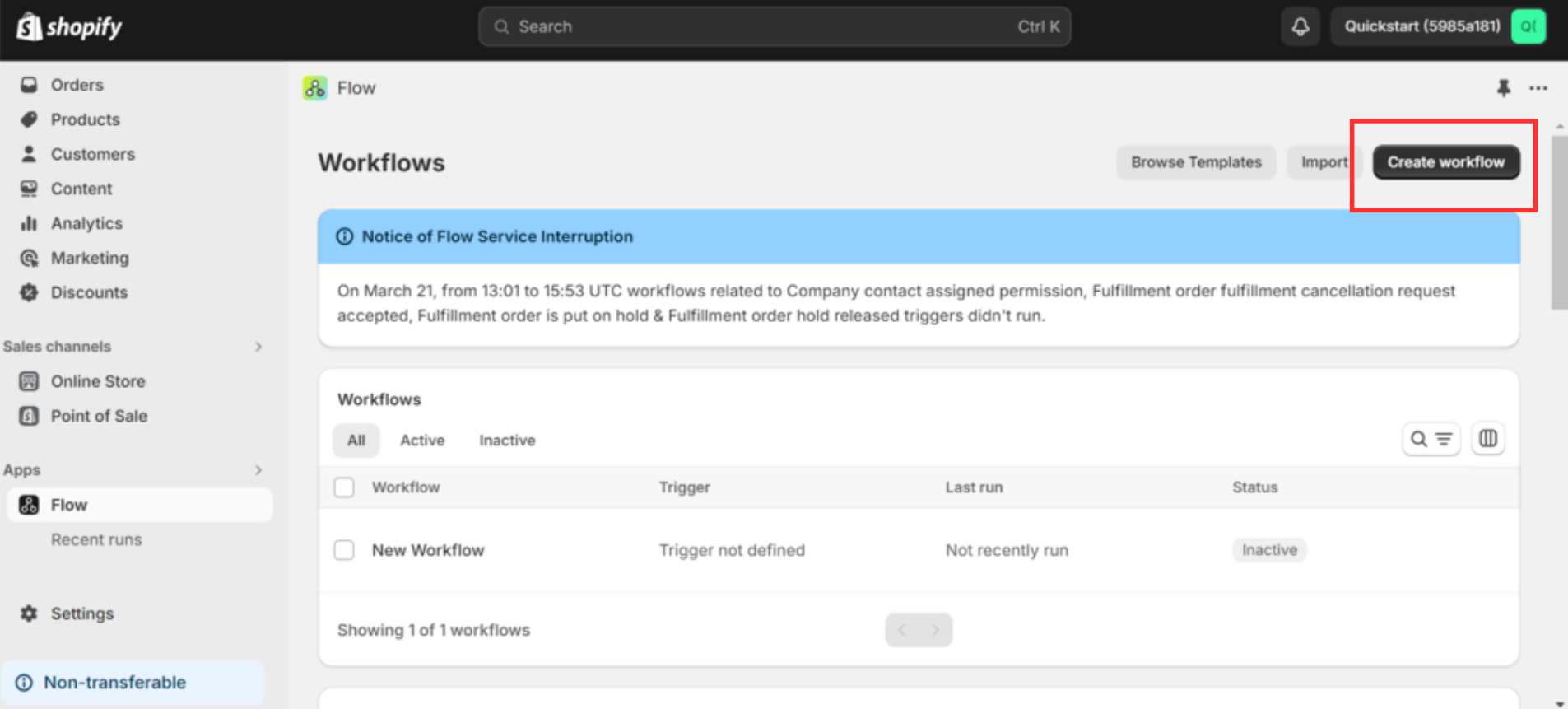
5. Click Select a trigger, and then choose the one that initiates the workflow.
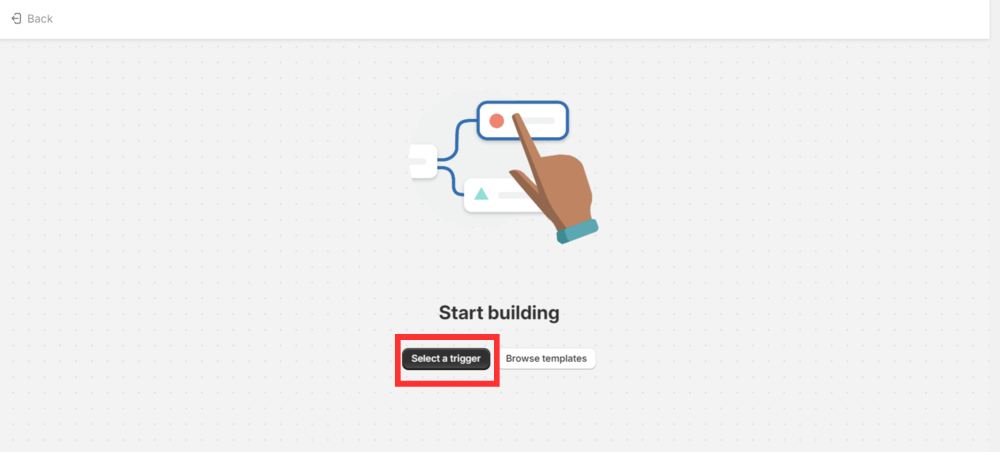
6. To create a new step, click the Output button. Click Condition, then pick the condition that must be met before any actions can be performed.
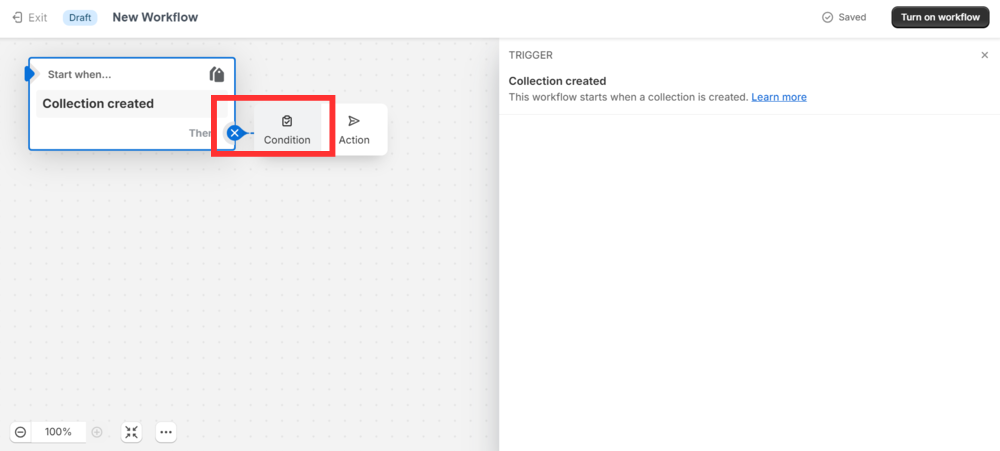
7. Click Then to choose the action to do if the condition you specified is true. Click Actions and select the action that executes based on the results of the condition.
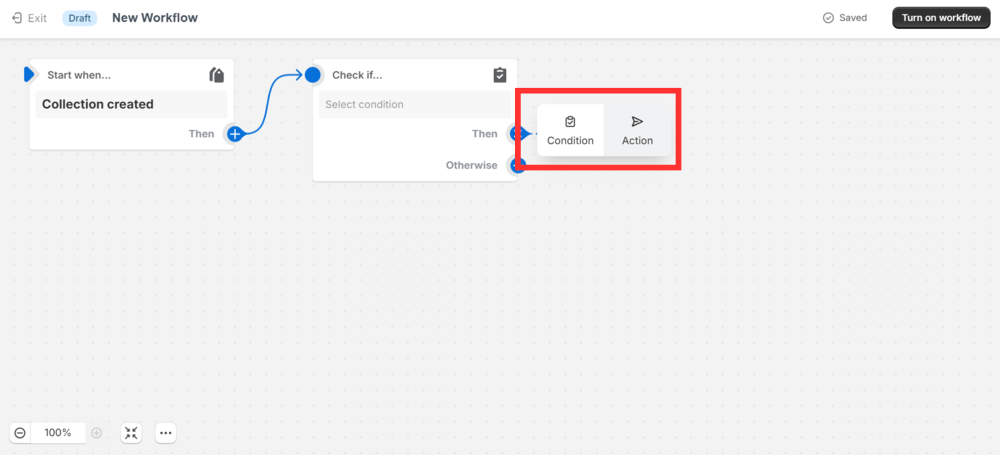
8. Click Otherwise to add to your workflow if the condition you specified is untrue. You can add more conditions or actions.
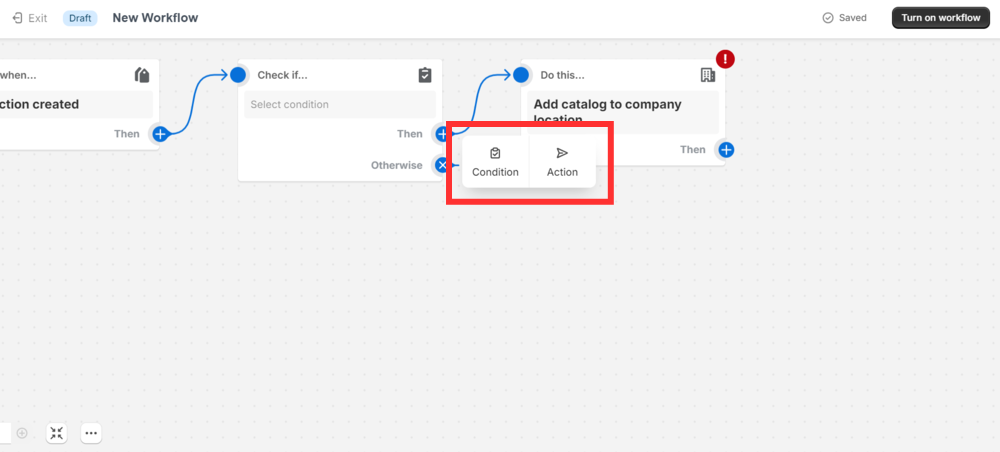
9. Select New Workflow and input a title for your workflow.
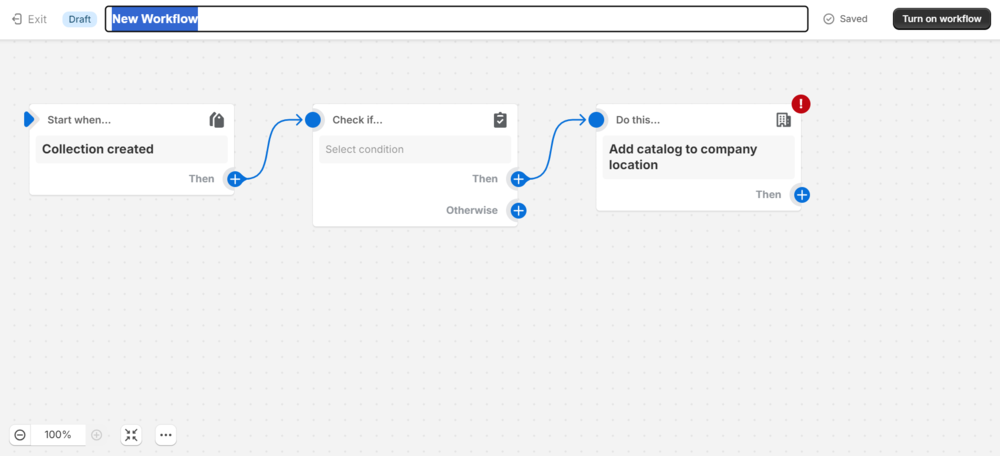
10. To activate your workflow, click Turn on Workflow.
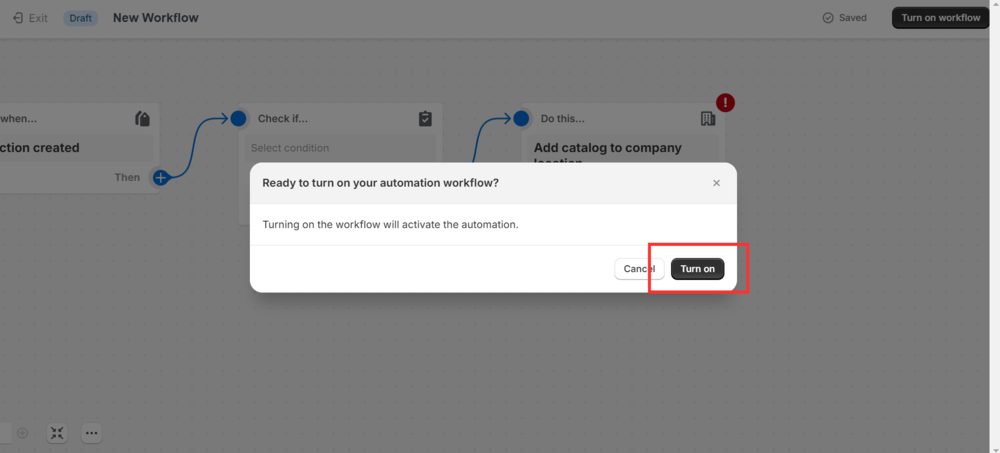
To use a trigger or action from an app, you must first install the connector, as many templates have app-based triggers and actions.
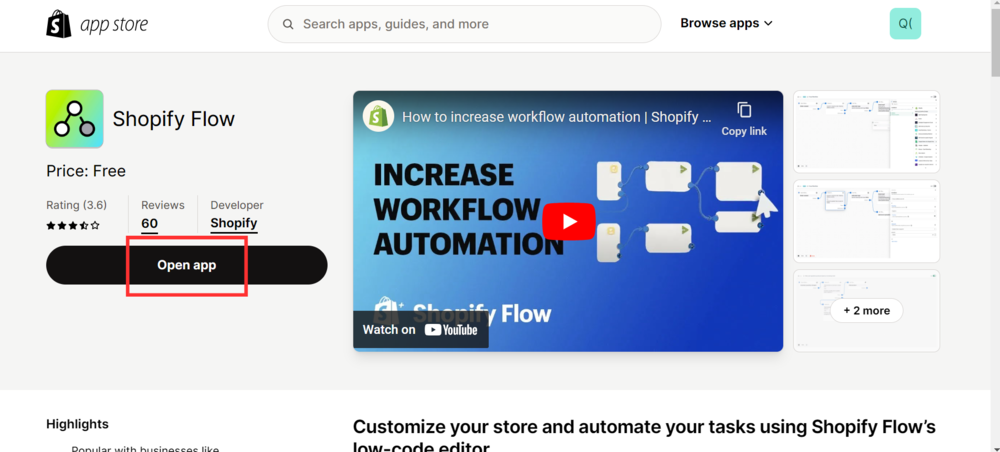
4. Select Create workflow.

5. Click Browse Templates, then choose a template.
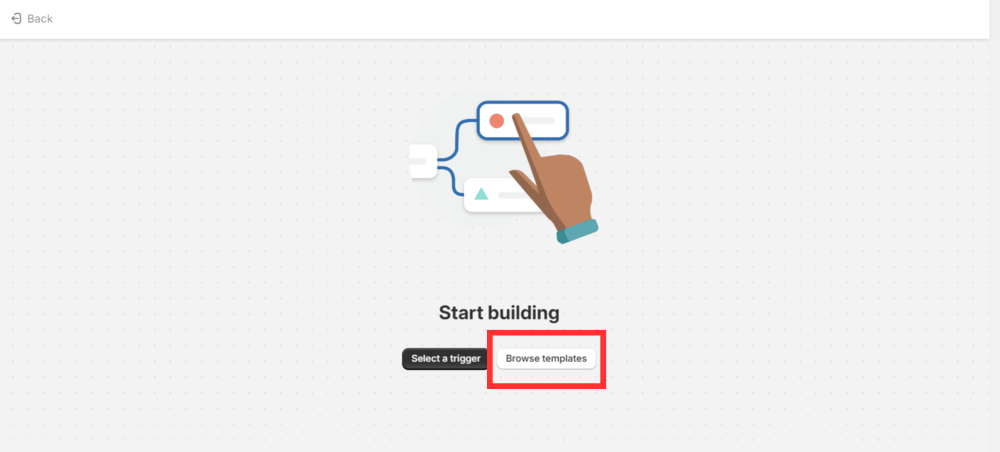
6. Check to see if the template suits your requirements.
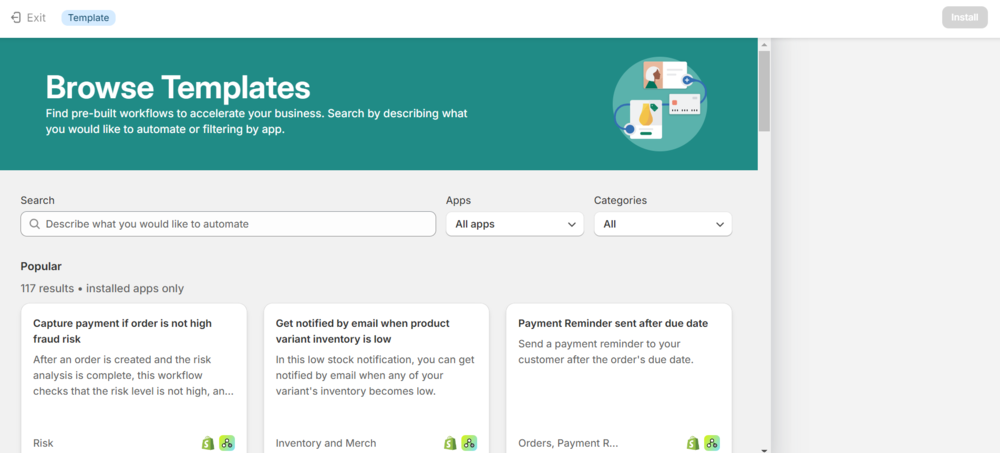
7. Select Install.
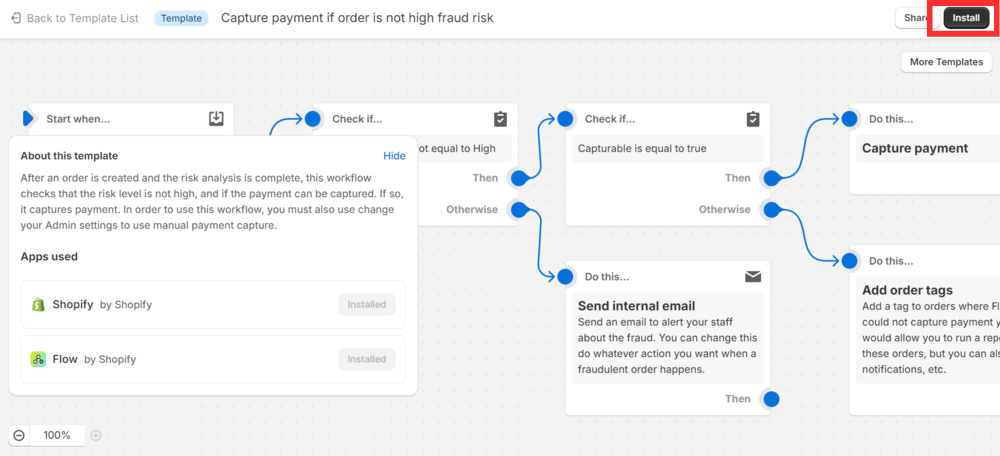
8. You can customize the template however you wish. Optional: Click the workflow’s name and update it.
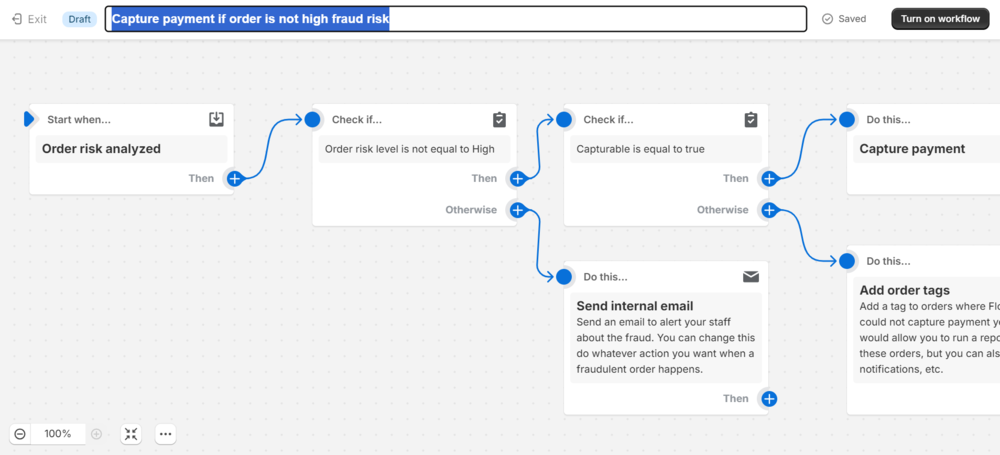
9. To begin using your process, click Turn on workflow.
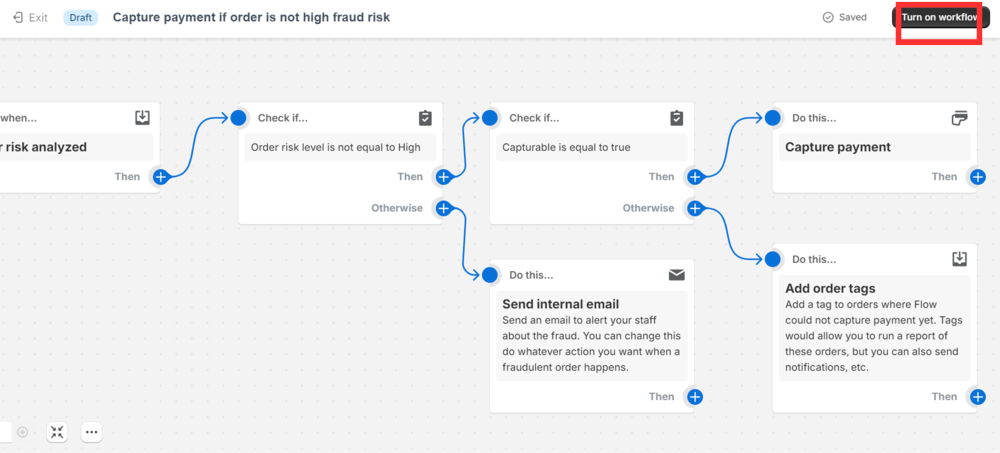
Shopify Flow enables merchants to automate the process of recovering abandoned carts effortlessly. When a customer adds items to their cart but does not buy them, Shopify Flow can send a follow-up email. It reminds them of their pending order. You can personalize this email with incentives. These can be discounts or free shipping. They encourage the customer to complete their purchase.
Merchants can use this automated workflow. It helps them reconnect with customers who showed interest in their products. This increases conversion rates and recovers lost revenue.
The platform is a valuable resource for accelerating your store’s merchandising process. When new items are added to your store, Shopify Flow can apply tags based on their title, SKU, variations, or kind, and place them in the relevant collections.

Segmenting customers is key for targeted marketing. Shopify Flow can make this process easier. When a customer purchases in a category, Shopify Flow can tag them as a “luxury buyer”. It does this based on predefined criteria. Then, they can be added to a segmented email list for luxury buyers.
This allows merchants to send targeted marketing campaigns. They can send promotions and product recommendations. These match the preferences and buying behavior of luxury buyers. This increases the odds of conversion and customer satisfaction.
For product promotions, Shopify Flow offers seamless automation. Upon adding a new product, it triggers the automatic creation of promotional campaigns on social media platforms like Facebook or Instagram. This ensures immediate exposure to potential customers, maximizing visibility and sales opportunities.
Similarly, when a seasonal sale commences, Shopify Flow dynamically updates product prices and generates banners on the website to emphasize the sale. This ensures that customers are promptly informed about the discount offerings, driving traffic and conversions during the promotional period.

Consumers are often driven to act by a sense of urgency or significance. Words, after all, are powerful.
You can easily track inventory changes using Shopify Flow. Not only that, but when a product’s supply runs low, you may quickly add the goods to a “Last Chance” collection (or whatever name you like). You can even identify it as “low in stock” to let shoppers know they only have a limited time to act.
Shopify also lets you filter by tags, making it easy for your employees to know which products are running low.
| Benefits | Drawbacks |
|
|

Although the Shopify Plus plan requires a monthly commitment of at least $2000, it is worthwhile. Shopify Flow, in particular, is designed to assign an assistant to assist you with these repetitive tasks, freeing up your time to focus on the growth of your business.
To be honest, far too many entrepreneurs and their teams waste far too much time dealing with issues that could be resolved more quickly and effectively using Shopify flow automation. Why put in the effort when you don’t need to?
With Shopify Flow, you can monitor reviews and respond to specific negative feedback. You can arrange and segment consumers based on key indicators such as client lifetime value or current expenditure. Shopify can also be used for inventory control. It is good for marketing, customer loyalty, and retention. It also enables offering discounts on specific orders.